
The Surge in Delistings Across the Country
Recent data reveals that the number of homes listed for sale and subsequently delisted – taken off the market without selling – has soared to all-time highs. This trend is a clear indicator of a pricing imbalance, where asking prices exceed what buyers are willing to pay.
Why It Matters: The rising delistings are not just a seasonal anomaly but a sign of deeper issues within the market. National delistings, as a percentage of total listings, have nearly doubled compared to the normal rate, defying typical seasonal trends and accelerating at an alarming pace.
Understanding these dynamics is essential for both buyers and sellers. For sellers, it highlights the importance of pricing strategies that align with current market conditions. For buyers, it provides insight into market pressures and potential opportunities.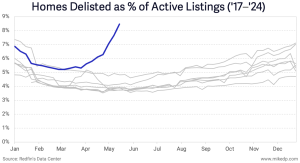
The amount of homes listed for sale and then delisted – taken off the market without selling – is rocketing to all-time highs.
Why It Matters: Rising delistings are a sign of a pricing imbalance, with asking prices higher than what buyers are willing to pay.
National delisting’s, as a percentage of total listings, are roughly double the normal rate, bucking seasonal trends, and accelerating rapidly.
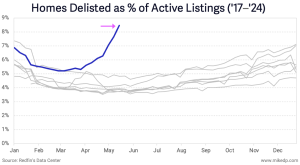
It all starts with pricing – and new listings coming to market are being priced very high.
The median price per square foot on new listings is at record highs.
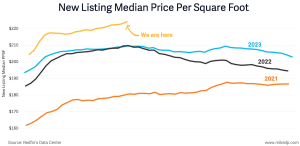
Another sign of a pricing imbalance are price drops, the number of which are also rising.
* The percentage of active listings with price reductions is higher than it’s been for years, and is increasing.
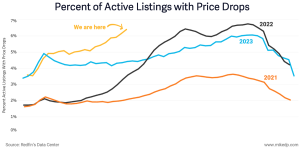
And for the houses are selling, it’s taking longer
The median amount of days on market is slowly increasing and is higher than past years
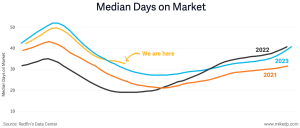 The bottom line: The surge of new listings coming to market are overpriced, leading to a rapidly increasing number of delisting’s and price drops.
The bottom line: The surge of new listings coming to market are overpriced, leading to a rapidly increasing number of delisting’s and price drops.
This is the start of a price correction; sellers are bringing more inventory to market, but with “aspirational pricing” that buyers are not willing to pay.
The record number of pricing corrective measures will likely lead to an overall correction – lower prices – as supply and demand continues to rebalance.
Source: Mike DelPrete
